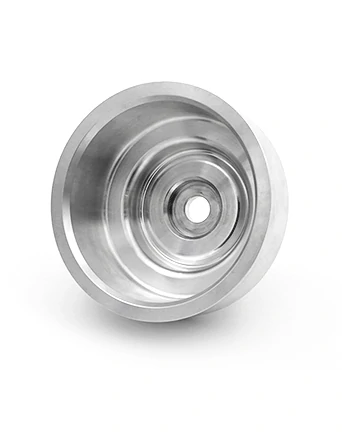Time to read: 6 min

Aluminum's high strength-to-weight ratio and exceptional ductility make it a staple in manufacturing and part production. This guide explores various aluminum grades, their properties, and applications in rapid prototyping, helping you select the optimal grade for your project.
Aluminum's ubiquity in manufacturing is not just due to its abundance; its strength-to-weight ratio surpasses that of steel. Combined with its ductility and machinability, aluminum is a justifiable choice across industries.
Properties of Aluminum:
- Physical Properties: Pure aluminum is soft, but its alloys are remarkably strong and possess a superior strength-to-weight ratio. They are also resistant to low temperatures and corrosion.
- Thermal and Electrical Properties: Aluminum's excellent thermal conductivity makes it ideal for automotive heat exchangers. Its alloys can be conductive or resistive, depending on the application.
- Mechanical Properties: Tensile strength varies by grade, from as high as 100ksi to as low as 1.5ksi.
- Reflectivity: Polished aluminum has a highly reflective surface, useful in light fixtures and decorative fittings.
Pros and Cons of Aluminum in Machining:
- Pros: Corrosion resistance, cost-effectiveness, strength despite lightweight, recyclability, suitability for rapid tooling manufacturing, low maintenance, and customization capabilities.
- Cons: Readiness to conduct electricity, a low melting point, and potential challenges in certain applications.
Grades of Aluminum Alloys: Aluminum alloys are categorized into cast and wrought alloys, each with distinct properties and applications.
-
Wrought Alloys: Have greater strength, identified by a four-digit system. The series include:
- 1xxx series: Pure aluminum, low strength, excellent corrosion and electrical conductivity.
- 2xxx series: Copper alloying, high strength, but less corrosion resistance.
- 3xxx series: Manganese alloying, moderate strength, excellent heat and corrosion resistance.
- 4xxx series: Low melting points, used as filler materials in welding.
- 5xxx series: Magnesium alloying, high tensile strength, great corrosion resistance, and weldability.
- 6xxx series: Exceptional corrosion resistance, medium to high tensile strength.
- 7xxx series: Zinc alloying, highest tensile strength, used in high-stress applications.
-
Cast Alloys: Can be heat-treatable or non-heat-treatable, identified by a four-digit system with a decimal point.
Commonly Used Types of Aluminum:
- Aluminum 6061-T6: High strength, corrosion-resistant, used in structural applications.
- Aluminum 7075-T6: Extremely strong and lightweight, used in aircraft fittings.
- Aluminum 5052: Moderate strength, excellent corrosion resistance, used in marine equipment.
- Aluminum 6063: Architectural aluminum, highly ductile, corrosion-resistant, used in extrusions.
How to Choose the Right Aluminum Grade: Consider factors such as machinability, cost, workability, weldability, corrosion resistance, heat treatability, and strength when selecting an aluminum grade.
Applications of Aluminum: Aluminum is extensively used in the medical sector, aviation industry, electrical industry, and automotive industry due to its properties.
Conclusion: Aluminum's versatility in different industries is a result of its varying properties based on alloying elements. With a wide array of aluminum grades available, selecting the right one for your prototype can be challenging.
At UnoFactory, we offer expert guidance on material selection for various machining projects. Contact us today for assistance in choosing the best aluminum grade for your needs.




